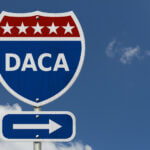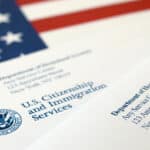Contents
In the U.S., driver’s licenses are issued by the states, not by the federal government. Because the U.S. requires no national ID card, driver’s licenses – more-or-less by default – have become the accepted standard form of identification. States also issue “official” ID cards to non-drivers.
Prior to the Real ID Act of 2005, each state determined its own rules and criteria for issuing a driver’s license or ID card. However, in 2004, the National Commission on Terrorist Attacks Upon the United States (also known as the 9-11 Commission) recommended a change.
The Real ID Act establishes minimum security standards for the production and issuance of drivers’ licenses and other official identification cards by the fifty states. According to the Department of Homeland Security’s website, “Secure driver’s licenses and identification documents are a vital component of our national security framework. The Real ID Act of 2005 is a federal law designed to fight terrorism and deter identity theft. Congress passed the Real ID Act in response to the 9/11 Commission’s recommendation that lawmakers should ‘set standards for the issuance of sources of identification, such as driver’s licenses.’”
WHERE WILL “REAL ID” BE REQUIRED?
The law also bars federal agencies in specific circumstances from accepting drivers’ licenses and other ID cards issued by states that fail to meet the Real ID Act’s minimum requirements. As of January 22, 2018, air travelers with a driver’s license or identification card issued by a state that does not meet the requirements of the Real ID Act (unless that state has been granted an extension to comply with the Act) must present an alternative form of identification acceptable to the Transportation Security Administration (TSA) in order to board a commercial domestic flight.
And as of October 1, 2020, the federal government will require your driver’s license or other state-issued ID card to be Real ID compliant if you wish to use it as identification to board a commercial aircraft or to enter restricted or semi-restricted federal facilities.
A Real ID compliant driver’s license or ID card has a gold circle with a star cutout in the upper right-hand corner. Non-compliant cards are marked “Not for Federal Official Use.” The Nevada Department of Motor Vehicles (DMV) recommends that all residents of Nevada obtain a Real ID compliant license or ID card at their next driver’s license renewal or driver’s license change.
To obtain a Real ID compliant Nevada Driver’s License or ID card, you must present proof of identity, your Social Security number, and two proofs of address in person at the DMV, even if you did so prior to Real ID implementation in November, 2014. However, if you have never been a green card holder, and if you cannot produce a U.S. birth certificate, you’ll need other documents in order to obtain a Real ID compliant driver’s license in Nevada, and you’ll need to act right away. An experienced Las Vegas immigration attorney can help you obtain those documents.
U.S. citizens without a U.S. birth certificate who are seeking a Real ID compliant driver’s license in Nevada will need to obtain a Certificate of Citizenship by submitting USCIS Form N-600. The Certificate of Citizenship is required if you were born outside of the United States to a U.S. citizen-parent or if you automatically became a citizen of the United States after you were born but before you turned 18 years old. A parent or legal guardian may also file a Form N-600 on behalf of a minor child.
HOW CAN A LAWFUL PERMANENT RESIDENT OBTAIN A REAL ID LICENSE?
You may qualify for naturalization – and File USCIS Form N-550 – if you’ve been a lawful permanent resident (LPR) for at least five years and meet all other eligibility requirements; if you are the spouse of a U.S. citizen, have been an LPR for at least three years, and meet all other eligibility requirements; or if you have qualifying service in the U.S. military and meet all other eligibility requirements. Along with becoming a legal, naturalized U.S. citizen, you’ll receive a Certificate of Naturalization that will allow you to obtain a Real ID compliant Nevada Driver’s License.
Other lawful permanent residents will need to present a green card (I-551) and a valid, unexpired foreign passport or a Form I-94 stamped “Processed for I-551.” If your green card is expired, you must also present a Notice of Action (I-797) showing an approved extension. Limited-term residents must present an unexpired Employment Authorization Card (I-766) and a valid, unexpired foreign passport with an unexpired U.S. visa and a Form I-94.
You’ll need a Real ID compliant Nevada Driver’s License to board any commercial aircraft beginning in January, 2018, so if you need to obtain either a Certificate of Citizenship or a Certificate of Naturalization, start now, because those documents can take six months or more to process. An experienced Las Vegas immigration attorney can help you complete either form and answer any questions you have regarding Certificates of Citizenship or Naturalization, Real ID, and related topics.
IS THERE A COST FOR UPGRADING TO A REAL ID COMPLIANT LICENSE?
Existing Nevada licenses and ID cards will continue to be accepted (except for boarding commercial aircraft) until they expire or until October 1, 2020, whichever is sooner. You cannot obtain a Real ID compliant Nevada Driver’s License online or by mail, but you may upgrade to a Real ID license or ID at any time.
The fee is $9.25 for the license, $8.25 for a state ID card, or $13.25 for a commercial driver’s license. Other changes, such as a change of your name or address, may be included with no additional fee. If you are completing a transaction such as a renewal, normal fees apply and there is no added fee to upgrade to a Real ID compliant license.
The fifty states and the District of Columbia have made significant progress in enhancing the security of their drivers’ licenses and other official identification cards since the Real ID Act became the law in 2005. As a result, approximately 90 percent of all U.S. drivers now hold licenses from states that have either met the law’s standards or have determined to meet those standards and received deadline extensions.
Everyone who drives in Nevada will be affected. In fact, drivers’ licenses from states which are not compliant are not being accepted at many federal facilities already.






